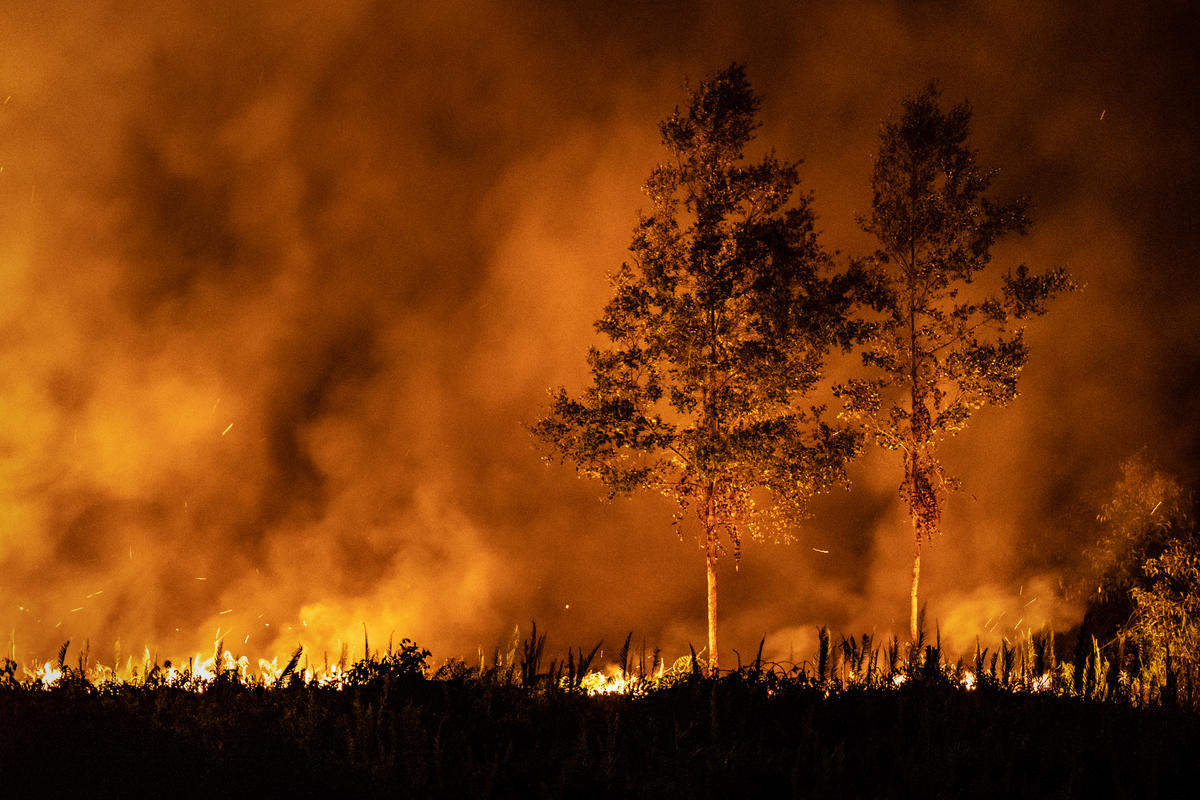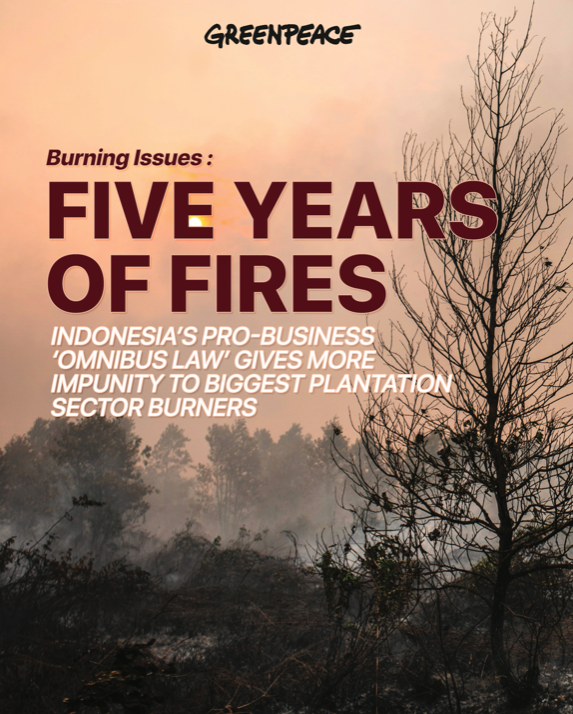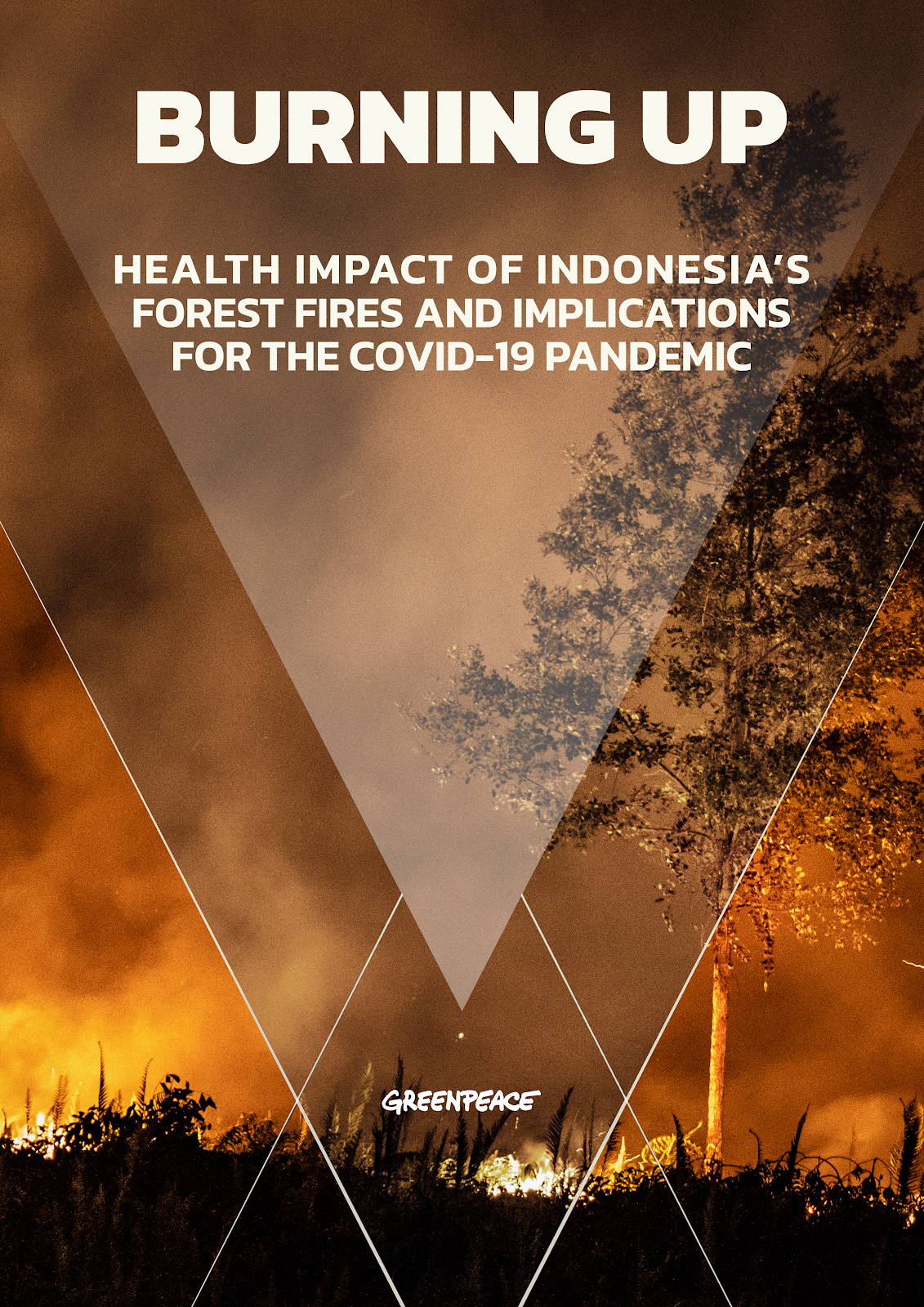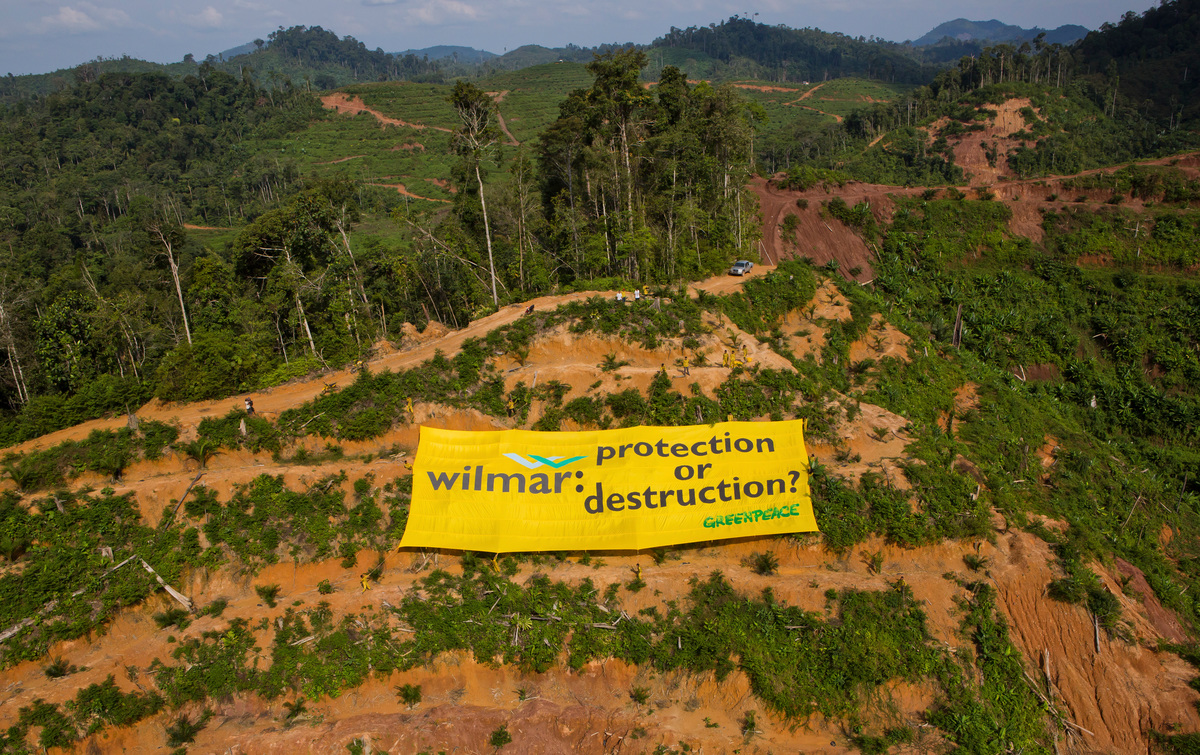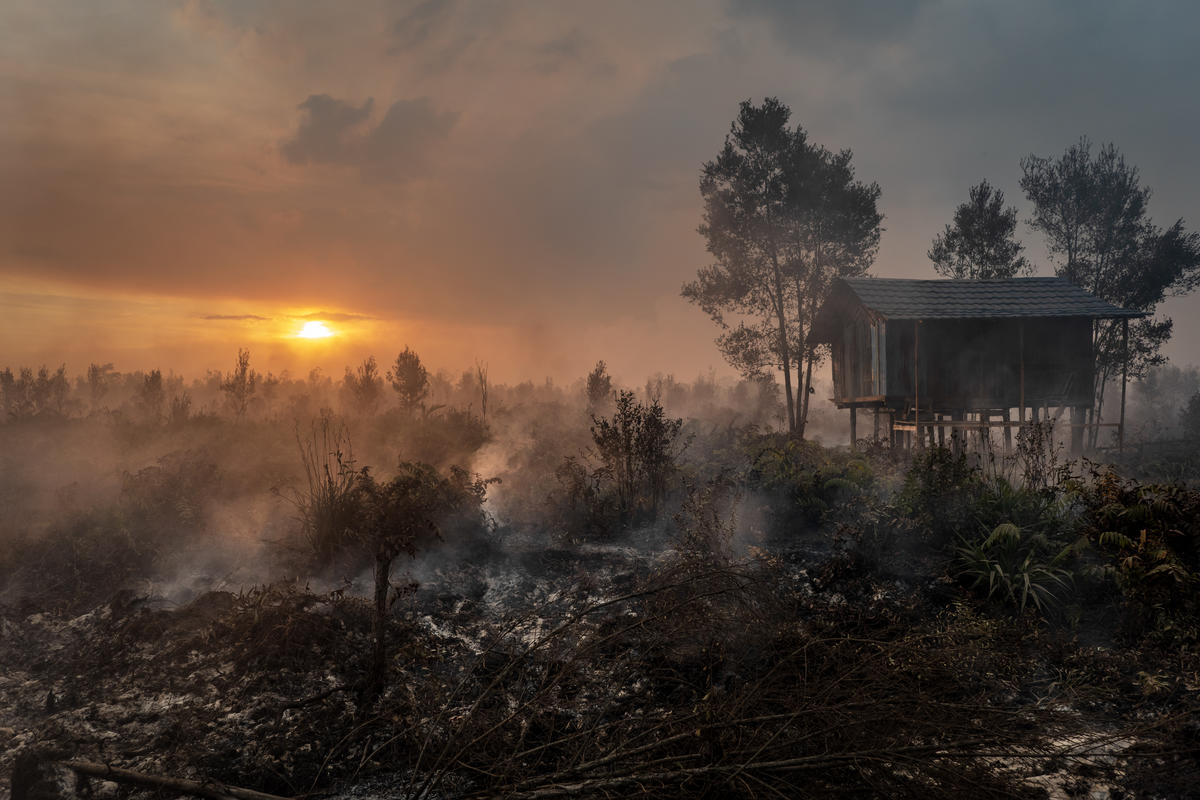All articles
-
Investigation indicates FSC-certified company intentionally used fire to clear Indonesian forests for palm oil
Greenpeace International collaborated with Forensic Architecture – a research collective based at Goldsmiths University of London, which uses spatial analysis to reconstruct cases of human rights violations and environmental destruction – to investigate whether the cause of the fires could be identified in Korindo’s palm oil concessions in Papua.
-
An area eight times the size of Bali has burned in Indonesia in the last five years, new Greenpeace report shows
Greenpeace Southeast Asia's new report ‘Burning Issues: Five Years of Fire’ exposes the total failure of Indonesia’s government to protect forest and peatland from burning.
-
Burning Issues: Five Years of Fire
The 2015 fire season in Indonesia was the worst in nearly two decades, with the blazes for almost a month emitting daily carbon emissions that exceeded those from the entire US economy.
-
Burning Up: Health Impact of Indonesia’s Forest Fires and Implications for the Covid-19 Pandemic
As Indonesia braces for the 2020 forest fire season, a timely review of data of the effect on smoke-affected communities shows consecutive governments have been consistently and massively underestimating the impact on human health.
-
Greenpeace finds Asia Pulp and Paper guilty of peatland clearance and fuelling forest fires in Indonesia
As the fire season looms in Indonesia, Greenpeace Southeast Asia revealed that Asia Pulp & Paper (APP), one of the world’s largest pulp and paper company, owned by the Sinar Mas Group, has been actively clearing Sumatran peatland for pulpwood plantations in direct breach of its own commitments to preserve and restore carbon-rich ecosystems and…
-
Maize, Land Use Change, and Transboundary Haze Pollution
Both the PM2.5 and transboundary haze pollution are directly related to the growth of monoculture agriculture in Thailand and in the neighboring countries. There is evidence that maize pricing varies with the number of fire hotspots. When there is a high demand for maize, there is also a higher number of hotspots.
-
Wilmar International’s exit from the High Carbon Stock Approach marks its failure to end deforestation
Wilmar International, the world’s largest palm oil trader, has taken a further backward step in implementing its commitment to removing deforestation from its commodity supply chains by resigning from the High Carbon Stock Approach (HCSA) the most credible and widely supported mechanism by which to identify and protect forested areas in plantation company concession areas.
-
The longest Greenpeace firefighting operation in pictures
Catastrophic wildfires, fueled by climate change, swept the world in 2019, including Indonesia. Find out the photo flashbacks and memories of Ratri Kusumohartono, Forest Campaigner at Greenpeace South-East Asia.
-
Major consumer brands linked to massive CO2 emissions from Indonesia forest fires
Some of the world’s best known brands are fueling climate change by sourcing palm oil and wood pulp linked to Indonesian forest fires, reveals new Greenpeace International analysis.
-
The RSPO dodges responsibility for its members’ role in Indonesia’s fires crisis
Greenpeace International’s newly published report Burning Down the House shows that 21 of the 30 palm oil producer groups most strongly associated with Indonesia’s ongoing fires crisis are (in whole or part) members of the Roundtable on Sustainable Palm Oil (RSPO). Collectively these RSPO members and their associates account for three-quarters of the fire hotspots…


